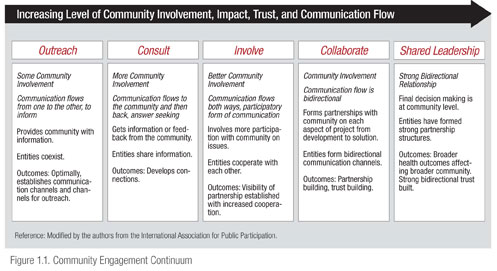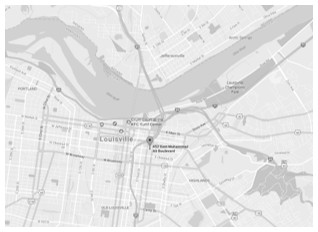Community Engagement Resources
Community Engagement Resources - Faculty and Students
Community Engagement Resources - Organizations
- Nurstory Project - http://www.nurstory.org/
- Carnegie Community Engagement Classification (Campus Compact) - https://compact.org/initiatives/carnegie-community-engagement-classification/
- Coalition of Urban and Metropolitan Universities - http://www.cumuonline.org/
- International Association for Research on Service-learning and Community Engagement - http://www.researchslce.org/
Community Engagement Resources - Literature
Clinical and translational Science Awards Consortium, Community Engagement Key Function Committee Task Force on the Principles of Community Engagement (2011). Principles of Community Engagement 2nd Ed. https://www.atsdr.cdc.gov/communityengagement/ - Table identifies the continuum of community engagement. Washington DC: CDC/NIH (see below)

Michigan State University Committee on Evaluating Quality Outreach (2000). Points of Distinction: A guidebook for planning & evaluating quality outreach. Michigan state University - https://engage.msu.edu/upload/documents-reports/pod_2009ed.pdf
Brunton, G., Thomas, J., O'Mara-Eves, A., Jamal, F., Oliver, S., & Kavanagh, J. (2017). Narratives of community engagement: a systematic review-derived conceptual framework for public health interventions. BMC public health, 17(1), 944. doi:10.1186/s12889-017-4958-4. https://www.ncbi.nlm.nih.gov/pmc/articles/PMC5725895/pdf/12889_2017_Article_4958.pdf
Fitzgerald, H. & Burack, C. & Seifer, S. D. & Votruba, J.(2010). Handbook of Engaged Scholarship: Contemporary Landscapes, Future Directions: Volume 2: Community-Campus Partnerships. East Lansing: Michigan State University Press. Retrieved July 25, 2019, from Project MUSE database. https://muse.jhu.edu/book/6954
